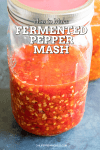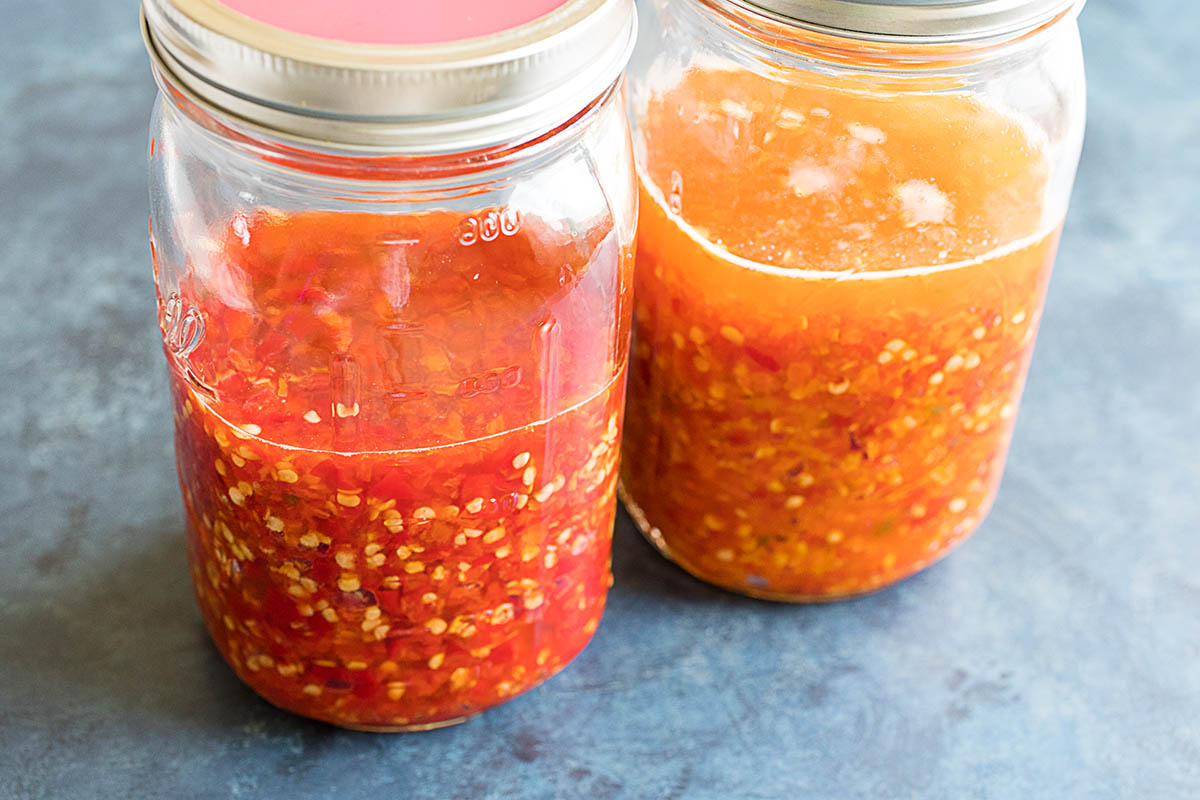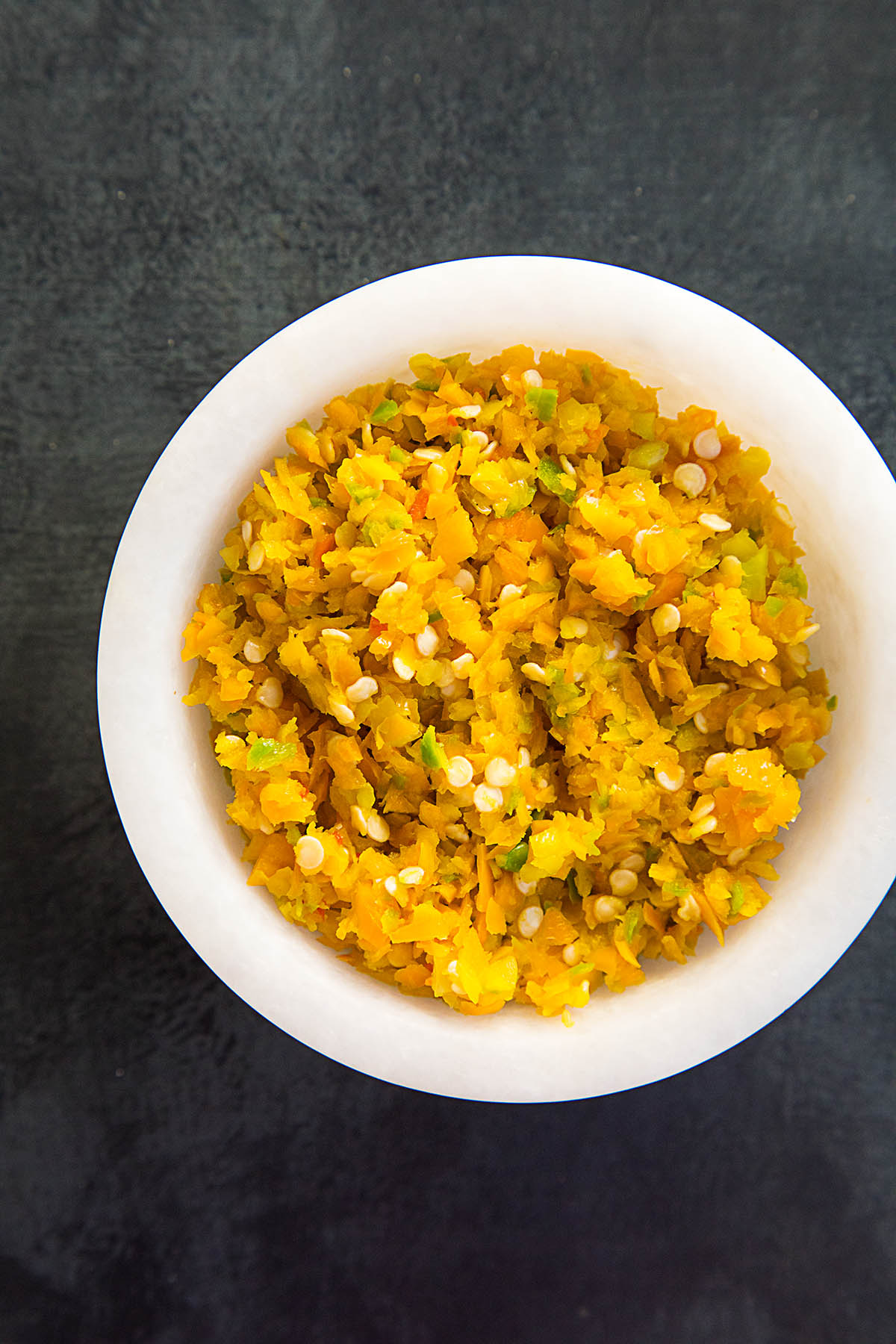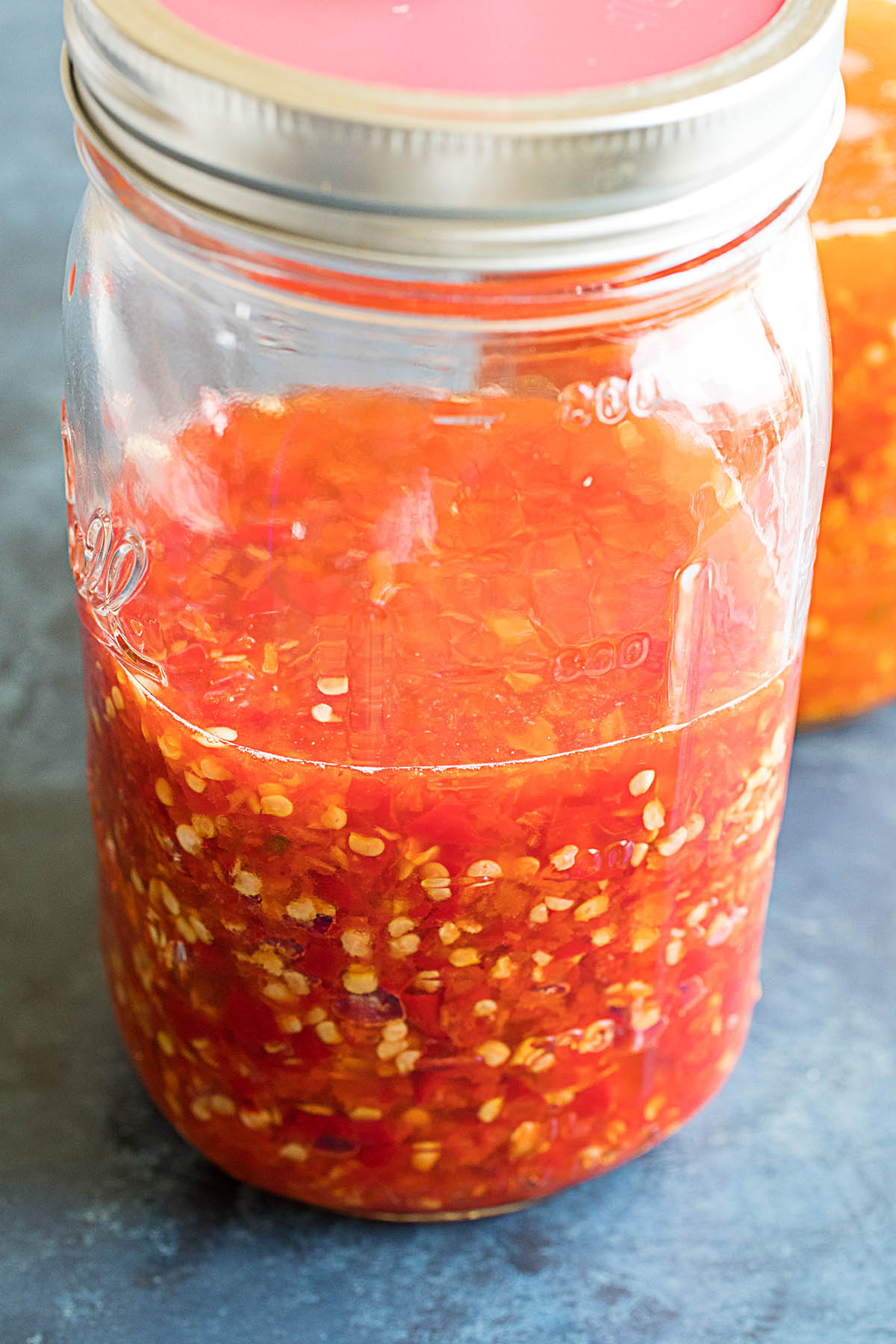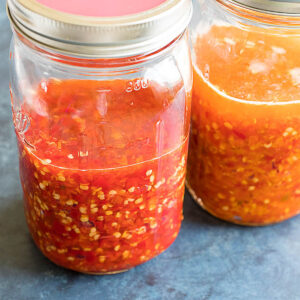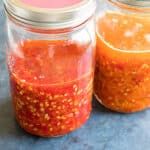Good luck, and happy fermenting! Let me know what you make with your pepper mash. If you’ve ever enjoyed Tabasco sauce, you’ve tasted fermented chili peppers. Tabasco starts with tabasco peppers which they crush, mix with salt, and ferment in oak barrels for up to 3 years. The original Tabasco sauce only uses 3 ingredients – tabasco peppers, salt, and distilled vinegar. A number of hot sauce makers use fermented peppers in the form of pepper mash to make their products, and a good pepper mash makes a difference in the resulting flavors. If you’re interested in making sauces from pepper mash, good news. It’s easy to make at home and you don’t need to wait 3 years for it to be ready. But first… Fermentation, basically, is the decomposition of foods by micro-organisms (Lactic Acid Bacteria) or enzymes. We create an anaerobic (no oxygen) environment for the peppers so the natural Lactic Acid Bacteria can thrive, and other undesirable bacteria cannot. Bad bacteria, such as rotting molds, cannot survive in an anaerobic environment, which we create with salt and brine, therefore protecting the peppers while the good bacteria do their work. The salt is not actually the preservative. It is the acid produced by the fermentation process that does the preserving. Lactic acid bacteria consumes carbohydrates in the peppers and converts them to acid. After fermenting, the carbohydrates have been predigested, leaving them with more vitamins and flavor than fresh peppers. It is akin to a controlled decay process, and there are numerous benefits to fermentation, including more digestible foods and more desirable flavors. With peppers, you’ll notice a mellowing of flavors, changes in color, and in the pleasant smell of the resulting mash. The key is to ferment properly. You’ll know if you’ve made a mistake by the smell of a ferment. It will smell “off” or “rotten”. The fact is, we’re fermenting in a controlled environment, so just be sure to follow the proper procedures. Thinner walled peppers won’t need straining, so you may want to seed them first if you prefer a smoother result when you process the mash later on. To make pepper mash, first process your fresh peppers in a food processor. If you don’t have a processor, use a mortar and pestle or simply finely chop them. Next, mix in salt. You should use 1-2 teaspoons salt (5.69 - 11.38 g) per pound (.45 kg) of peppers. 1 pound of peppers should process down to about 1 cup of mash. So, use 1 teaspoon of salt per cup of mash, which is roughly 2.3% salt by weight. Resources vary in their salt recommendations. Most recommend 2-5% by weight and up to 10%, with 2-3% being ideal. The peppers will begin to release their moisture right away. A note about salt: most salts are fine to use, but avoid using salts with additives, such as table salt. Place your mash into a jar and press it down to remove any air pockets. Leave at least 1 inch (2.54 cm) of headspace. The peppers may rise a bit when fermenting. The brine will rise up and cover the peppers. It is important to keep the peppers covered with brine to avoid spoilage. Check this daily. Screw on the lid and set the jar away from direct sunlight to ferment for at least 1 week. Ideal temperatures are between 55-75 degrees F (12.78-23.89 C). The most active fermentation period is between 1-2 weeks, so be sure to monitor it during this time. “Burp” the jars often by unscrewing the lid a bit to let out some of the accumulating gases. Or, use an airlock or membrane for easier fermenting. See below for what I like to use. After 1-2 weeks, the fermenting activity will diminish. Move it to a pantry where you can let it ferment longer if you’d like, or use it right away. You can ferment for months or even longer to allow the flavors to more fully develop. Once it is ready, store it in the refrigerator where it will last for a year or longer. To make a brine pepper mash, first chop your fresh peppers. You can process in a food processor or use a mortar and pestle or simply finely chop them. Pack them into a jar, leaving at least 1 inch of head space. The peppers may rise a bit when fermenting. Next, mix 1 quart (.95 liter) unchlorinated water with 1.5 (27 g, for 3% brine) to 3 tablespoons (54 g, for 6% brine) sea salt. Pour just enough brine over the peppers to cover them, pressing them down a bit as you go. It is important to keep the peppers covered with brine to avoid spoilage. Check this daily. Screw on the lid and set the jar away from direct sunlight to ferment for at least 1 week. Ideal temperatures are between 55-75 degrees F (12.78-23.89 C). The most active fermentation period is between 1-2 weeks, so be sure to monitor it during this time. “Burp” the jars often by unscrewing the lid a bit to let out some of the accumulating gases. Or, use an airlock or membrane for easier fermenting. See below for what I like to use. After 1-2 weeks, the fermenting activity will diminish and the brine will turn cloudy and taste acidic. Move it to a pantry where you can let it ferment longer if you’d like, or use it right away. You can ferment for months or even longer to allow the flavors to more fully develop. Once it is ready, process it with a food processor. You can use it right away to make hot sauce or store it in the refrigerator where it will last for a year or longer. I personally like to add a bit of vinegar at this stage before storage. Buy Masontop Lids for Fermenting Chili Peppers (and More)
Recommended Cookbook
I also highly recommend this outstanding book by fermenting experts, Kirsten K. Shockey and Christopher Shockey – “Fiery Ferments: 70 Stimulating Recipes for Hot Sauces, Spicy Chutneys, Kimchis with Kick and Other Blazing Fermented Condiments”. I learned a lot from this book as well as through my own experimentation. Grab a copy today. Got any questions? Please contact me anytime and I will do my best to help. Good luck with your pepper fermentation! When fermenting chili peppers, it’s important to use the right amount of salt according to your recipe or fermentation process. Too little salt can lead to spoilage or mold growth, while too much salt can inhibit fermentation. Also, some people report a bitterness from the pepper seeds, so try removing the seeds before fermentation and see if that affects your resulting flavor. To counterbalance the bitterness, try adding an acid like vinegar or lime juice, which can help balance it out, then a sweetener like sugar or honey. Certain roasted vegetables can help, too, like carrots or other flavors. Garlic is good. They can all help balance out the bitterness. Give the final sauce time to rest and let the flavors meld in the refrigerator. Sweeter vegetables, particular peppers, are more prone to kahm yeast. If the ferment smells rotten or disgusting to you, it has gone bad. Trust your nose to know if something is bad. A good ferment will have a slightly sour smell, but will smell pleasant.
Fermented Hot Sauce Recipe Homemade Sriracha Hot Sauce Fermented Aji-Garlic Hot Sauce Homemade Louisiana Hot Sauce Spicy Serrano Hot Sauce
Check out more Hot Sauce Recipes or learn more about How to Make Hot Sauce. Also see my post on Homemade Kimchi (How to Make Kimchi). The best ph meters that I recommend are from Thermoworks. Get yourself a ph meter from Thermoworks today. I am a happy affiliate.
